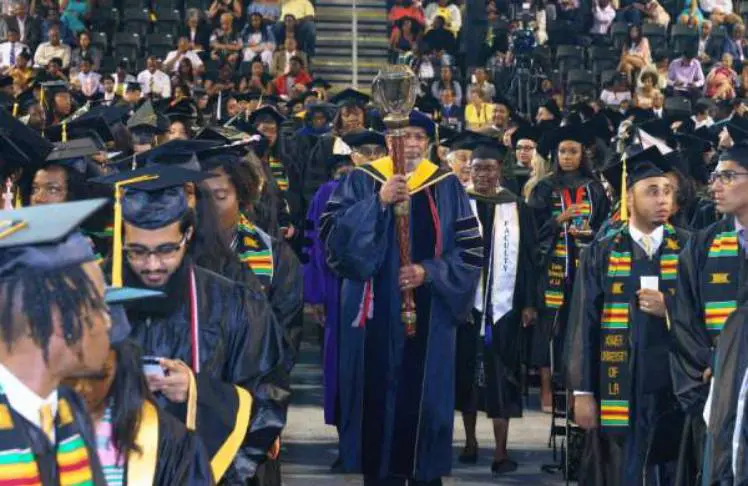
This post was originally published on The Washington Informer
By Stacy M. Brown
Historically Black land-grant universities across 16 states have been denied a staggering $12.6 billion in funding over the past 30 years, according to the Biden administration.
Secretary of Education Miguel Cardona and Secretary of Agriculture Thomas Vilsack announced that they have contacted governors in each affected state, urging them to rectify the funding gap, which has had its most significant impact in Tennessee, according to a news release. Tennessee State University has suffered an underfunding deficit of $2.1 billion.
“Unacceptable funding inequities have forced many of our nation’s distinguished historically Black colleges and universities to operate with inadequate resources and delay critical investments in everything from campus infrastructure to research and development to student support services,” Cardona emphasized.
Similar letters were dispatched to governors in Alabama, Arkansas, Florida, Georgia, Kentucky, Louisiana, Maryland, Mississippi, Missouri, North Carolina, Oklahoma, South Carolina, Texas, Virginia and West Virginia. The nation’s land-grant universities, established in the 19th century, were designed to advance agricultural education and research. While federal law mandates equitable distribution of state funding for all land-grant universities, this has not been realized for many historically Black institutions, as revealed in a comprehensive analysis.
Utilizing data from the National Center for Education Statistics, the federal agencies uncovered funding disparities in 16 out of 18 states hosting Black land grants. Only Delaware and Ohio provided equitable funding.
Cardona spoke fervently about the accomplishments of HBCUs and their impact on various professions.
“The Biden-Harris administration is proud to have made record investments in our HBCUs, but to compete in the 21st century, we need state leaders to step up and live up to their legally required obligations to our historically Black land-grant institutions,” Cardona demanded.
Vilsack echoed Cardona’s sentiments, recognizing these institutions’ pivotal role in agricultural advancements. He emphasized the need for governors to invest in HBCUs at levels commensurate with their contributions to society and the economy.
In a news release, administration officials noted that the Second Morrill Act of 1890 mandated that states establishing a second land-grant university for Black students ensure equitable distribution of state funds between their 1862 and 1890 land-grant institutions. The 1862 land-grant universities were established through the First Morrill Act of 1862, which provided states with federal land to support the colleges.
Drawing on data from the National Center for Education Statistics from 1987 to 2020, the departments calculated the amount these institutions would have received if their state funding per student equaled that of 1862 institutions. Officials said the discrepancies in appropriated funding ranged from $172 million to $2.1 billion, creating significant financial disparities. Over the past three decades, these funds could have been channeled towards crucial infrastructure and student services, enhancing the universities’ capacity to pursue grants and expand educational opportunities.
The Departments of Education and Agriculture said they have extended their offer to collaborate with each state’s budget office to analyze the funding data and redress the disparities in investments for 1890 HBCUs that have faced chronic underfunding.
Each letter outlined the specific underfunding per student for each state’s 1890 HBCUs between 1987 and 2020 and suggested remedies for the situation. “We want to make abundantly clear that it is not necessary to reduce funding to other institutions, nor make a reduction in general fund allocations to (HBCUs) in addressing these disparities,” the secretaries wrote. “We are at an inflection point that will determine our place in the world as leaders. We need to solidify our country as the top producer of talent and innovation – demonstrating to the global community that nothing can beat American ingenuity.”
They continued:
“The state that serves as our nation’s economic engine for the next generation is sure to be one that fully realizes all its assets and is committed to ensuring that opportunity is equally distributed. Given the career opportunities that will be available due to recent bipartisan federal investments for key industries, strengthening these universities to provide tomorrow’s workforce will enhance your state’s economic viability.”
The post Funding Disparities Plague HBCUs: Biden Administration Demands State Leaders Bridge $12.6 Billion Gap appeared first on The Washington Informer.















